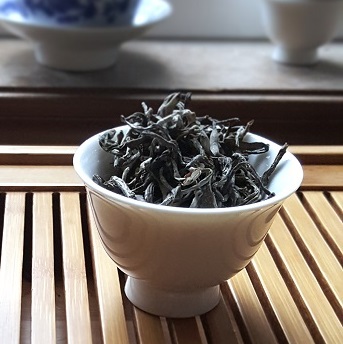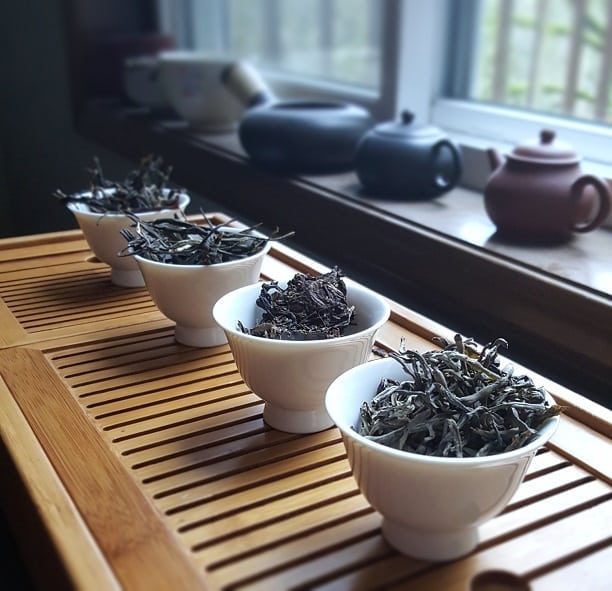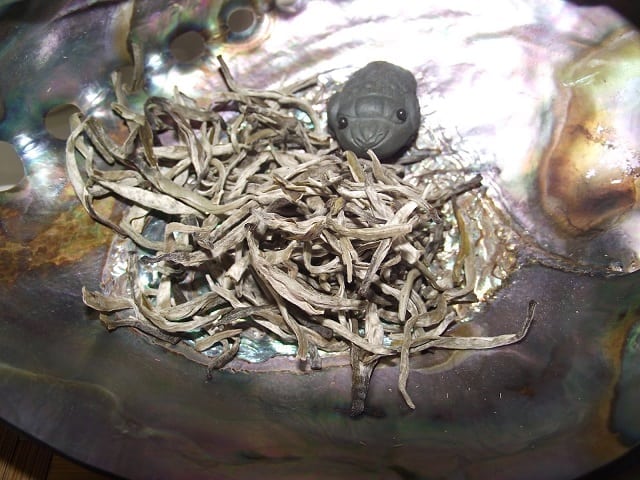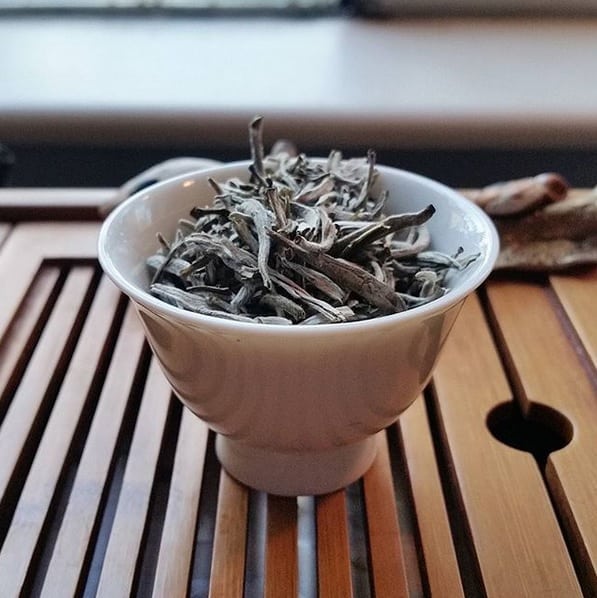In 2010, back in my review days, a Vietnamese cooked pu-erh happened upon my desktop. By then, I had developed a predilection for weird teas and new origins. So, the idea of a pu-erh, from somewhere other than Yunnan, excited me. That is, until I tasted it. Let’s just say, I wasn’t a fan.

But – in its defense – that might have been my ‘Merica brewing approach.
I also mistakenly assumed that said cooked pu-erh was only named for being close to Vietnam, but wasn’t actually from there. As far as I knew back then, pu-erh wasn’t pu-erh unless it was from Yunnan province, China. Well, apparently, some parts of Yunnan and Vietnam are only separated by a river. Therefore, it was safe to assume that some Chinese pu-erh making techniques crossed the border.
Just this last year, I ran across a company that did sell Vietnamese pu-erh. Alas, they were all sold out of the stuff by the time I made an inquiry. However, around the same time (circa November), a forum topic was started by a new Tea Trader who went by the name “@Caobo”.
Apparently, he was affiliated with an outfit called Hung Cuong Trading Company, LTD, out of Ha Giang province, Vietnam. I knew nothing about the company. But further digging did turn up a website and a Facebook page.

Imaged owned by Hung Cuong Tea
The website was in Vietnames, but what did I expect? ‘Merican English everywhere?
After some discussion with Caobo, I was able to acquire two cooked pu-erh cakes – a 1999 and a 2005. And they. Were. Huge!

Left- 1999. Right – 2005
Seriously, beautifully pressed cakes. Not that I’m an expert on the subject – I’m nowhere near. But these were gorgeous. However, time and life got the better of me, and I didn’t dip into these until four months later. I know, par for (lazy) course.
Let’s get this out of the way. As I mentioned above, yes, I know they can’t be considered pu-erh in the traditional sense because they’re not Chinese in origin. Anything not from Yunnan is simply a heicha (or “dark tea”) in the most generalist of terms. But you know what? If the only thing separating your pu-erh variant from Yunnan is a friggin’ river, I think you’ve earned the right to the name.
Anyway, enough ranting, on with the tasting.
The ’99 cake had an aroma of dirt and…Russian caravans. Seriously, it was as earthy as any aged cooked pu-erh I’ve ever come across. I felt like I was on a dirt road riding on horseback. The ’05, by contrast, had a more spry smell – mint, dust, dirt, and something medicinal on the back-whiff. Points to the ’99 for sniff-test win.
And now…the hard part: Cutting into these beautiful cakes. Seriously, not since childhood birthday parties have I been so torn. To cut into something so beautiful made my heart ache. But there was tasting to be done, so I went to stabbin’.

The ’99 was murderously difficult to cut into. And I do mean murderous. I had to channel some misplaced rage just to plunge the pu-erh pick deep enough. Once I was able to pry some slivers free, the rest was easy. The parts I did flake off did so with ease once pressed.
The ’05 didn’t put up as much of a fight as its older brother, but the pieces that came off were far flakier and small. I gathered up what I could and put them in the cup. Color-wise, there wasn’t a difference between either cake’s compressed leaves. Only their consistency differed. As one would expect, the ’99 leaves kept together in their pressed form, whereas the ’05 was more prone to loosening.

Left- 1999. Right – 2005
For brewing, I decided to actually learn from past mistakes and went with a gongfu-ish approach. Boiled water, multiple steeps of about thirty seconds – gradually increasing the time on successive infusions. Given their age, and the “cooking” process, it was the only way to go.
The wet leaves for the ’99 stayed together after the first infusion, while the ’05 broke apart pretty easily under waterboarding stress. Aromatically, both couldn’t have been more different – the ’99 being straight earth, while the ’05 smelled like pipe tobacco.
The liquor for the ’99 also came out considerably darker (plus more difficult to pour, for some reason). The ’05 looked more like a small-cut Nilgiri black tea in liquor color. As for the steam scent off of both cups – ’99 was more pungent and dusty, and the ’05 was mild in its “essence of wilderness”.

Left- 1999. Right – 2005
As one would expect, the ’99 tasted much older – giving off a fungal vibe on the tongue, mixed with the earthen qualities already present. While the elder was more nuanced, the ’05 was a far smoother drink – reminding me of a light-smoked Lapsang Souchong in character.
Further infusions provided deeper dimensions to both, but honestly, after steep #2…descriptors escaped me. I was well into tea drunk by then. The only thing I can say for certain is that the ’99 the Elder started developing an oddly sweeter profile as time went on. The ’05 still stuck to its toasty guns on the smoke end of the spectrum – with a tickle of spice (???).
After I was done with all that finagling – and feeling a wee bit Zen-peachy – I decided to take the powdery dregs from both aged cakes…and gongfu them together. Oh, c’mon, like you weren’t expecting this?!
The results were…schizophrenic. Best to keep these two siblings apart. Age before beauty.

My favorite?
Well, they’re both tied, but for different reasons and in much different ways. I liked the way the ’99 felt and made me feel. I liked the ’05 for how it tasted and how comfortable it went down. For everyday drinking, the ’05 wins out. It’s a very approachable pu-erh. For the discerning palate throwing a special gathering of like-minded tea snoots? The ’99 wins out. All said, these were even better than some Yunnan cooked pu-erhs I’ve come across.
Consider me a very vocal Vietnamese tea fan.














